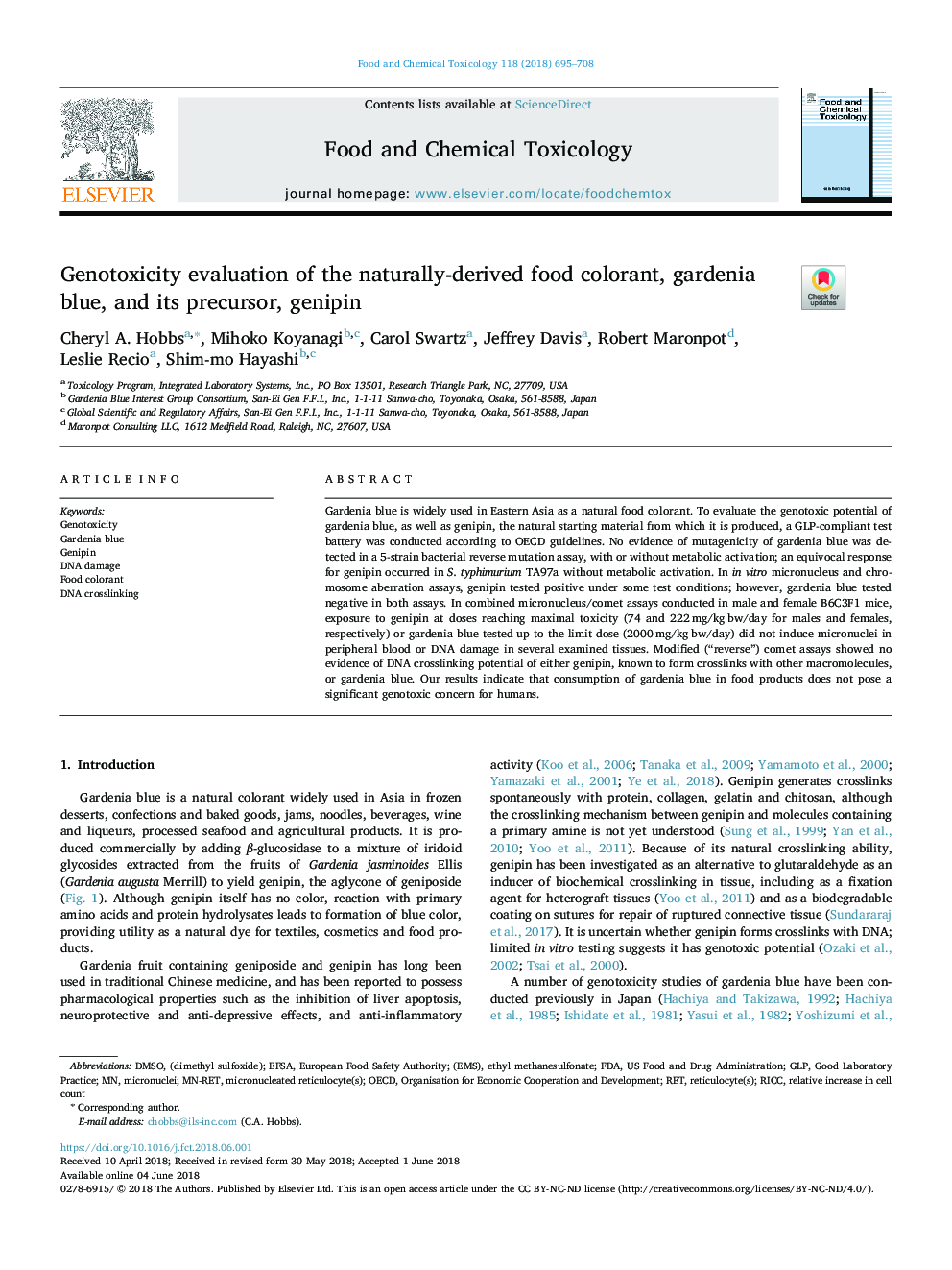| Article ID | Journal | Published Year | Pages | File Type |
|---|---|---|---|---|
| 8547142 | Food and Chemical Toxicology | 2018 | 14 Pages |
Abstract
Gardenia blue is widely used in Eastern Asia as a natural food colorant. To evaluate the genotoxic potential of gardenia blue, as well as genipin, the natural starting material from which it is produced, a GLP-compliant test battery was conducted according to OECD guidelines. No evidence of mutagenicity of gardenia blue was detected in a 5-strain bacterial reverse mutation assay, with or without metabolic activation; an equivocal response for genipin occurred in S. typhimurium TA97a without metabolic activation. In in vitro micronucleus and chromosome aberration assays, genipin tested positive under some test conditions; however, gardenia blue tested negative in both assays. In combined micronucleus/comet assays conducted in male and female B6C3F1 mice, exposure to genipin at doses reaching maximal toxicity (74 and 222â¯mg/kgâ¯bw/day for males and females, respectively) or gardenia blue tested up to the limit dose (2000â¯mg/kgâ¯bw/day) did not induce micronuclei in peripheral blood or DNA damage in several examined tissues. Modified (“reverse”) comet assays showed no evidence of DNA crosslinking potential of either genipin, known to form crosslinks with other macromolecules, or gardenia blue. Our results indicate that consumption of gardenia blue in food products does not pose a significant genotoxic concern for humans.
Keywords
Related Topics
Life Sciences
Agricultural and Biological Sciences
Food Science
Authors
Cheryl A. Hobbs, Mihoko Koyanagi, Carol Swartz, Jeffrey Davis, Robert Maronpot, Leslie Recio, Shim-mo Hayashi,
